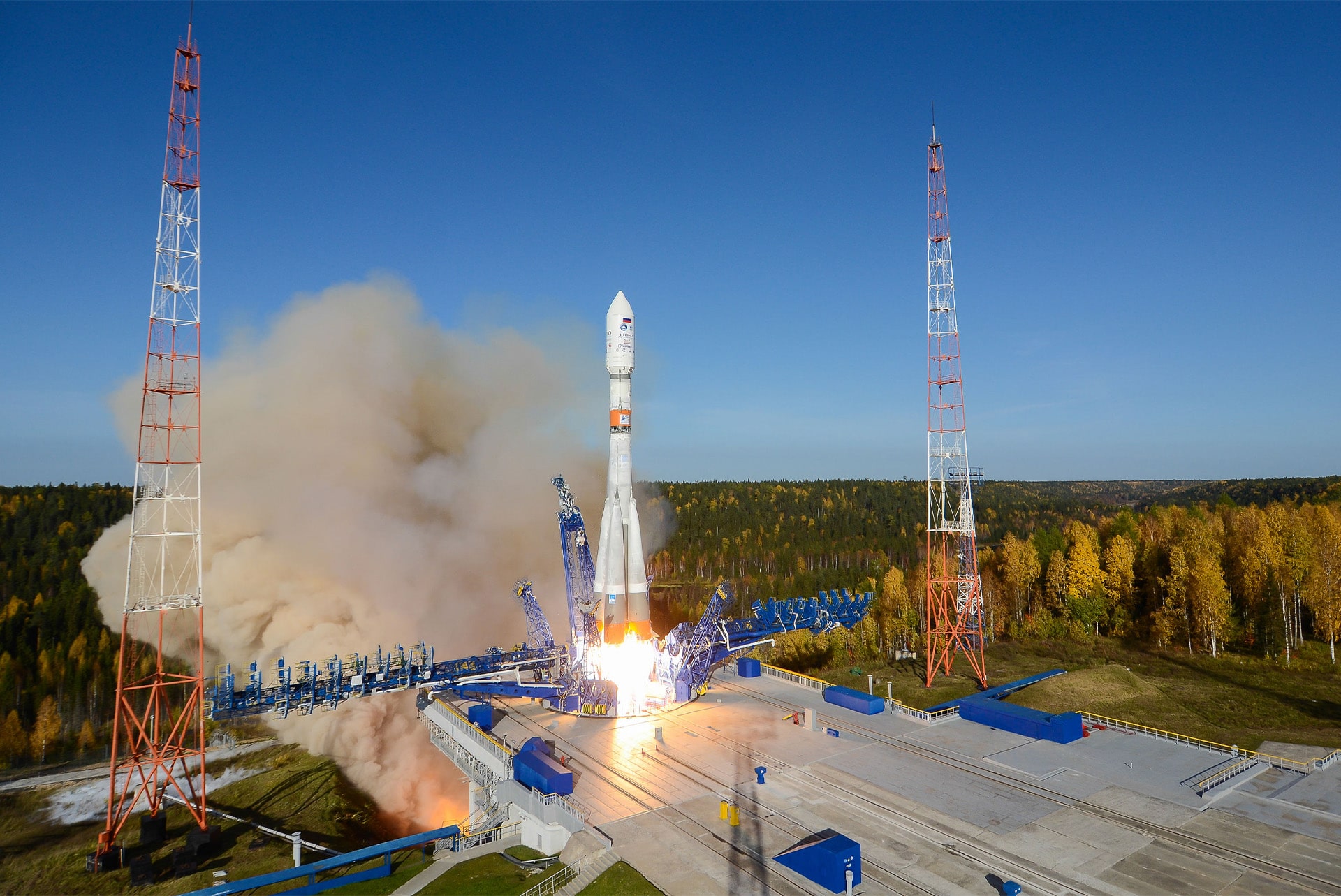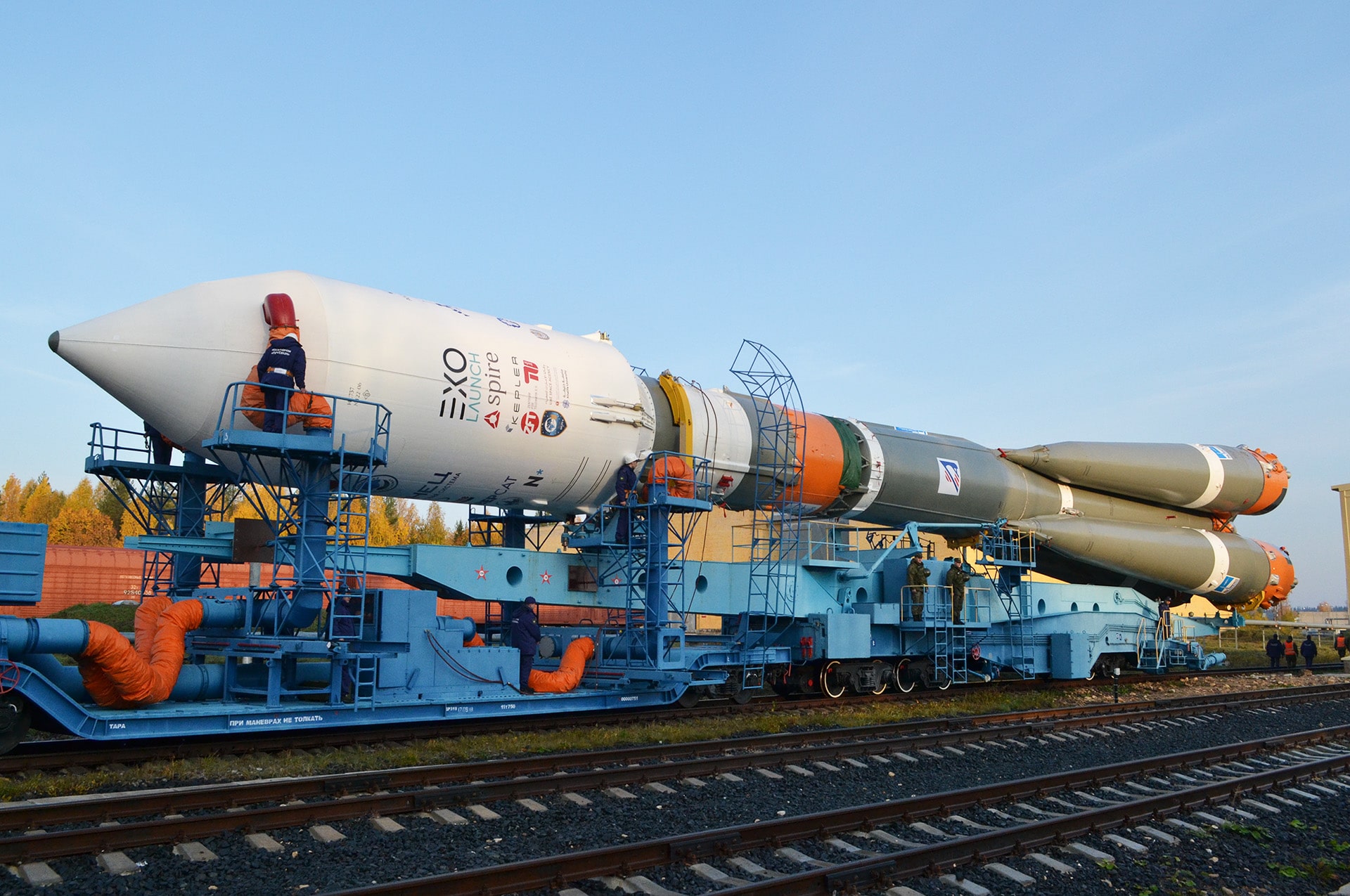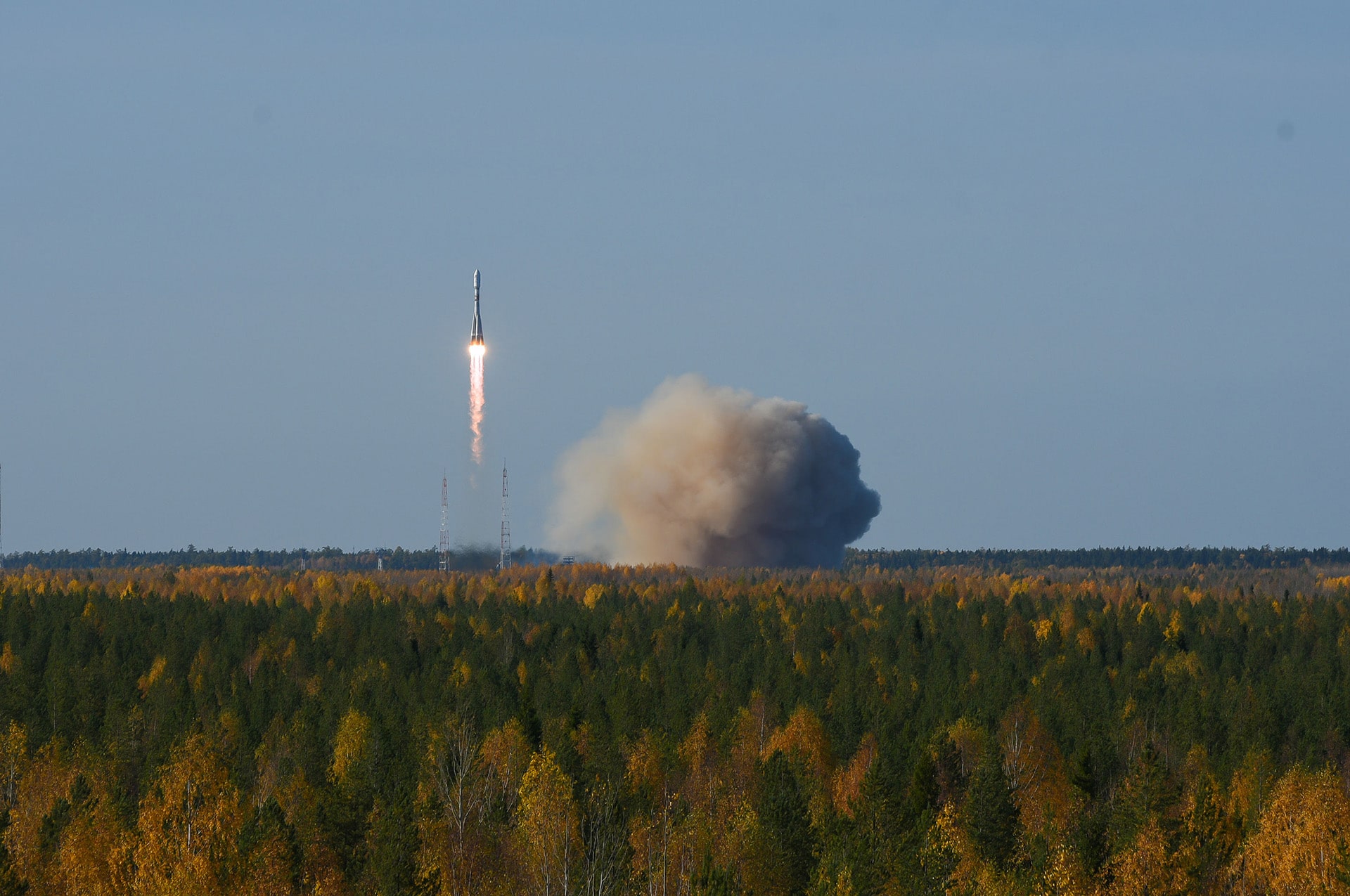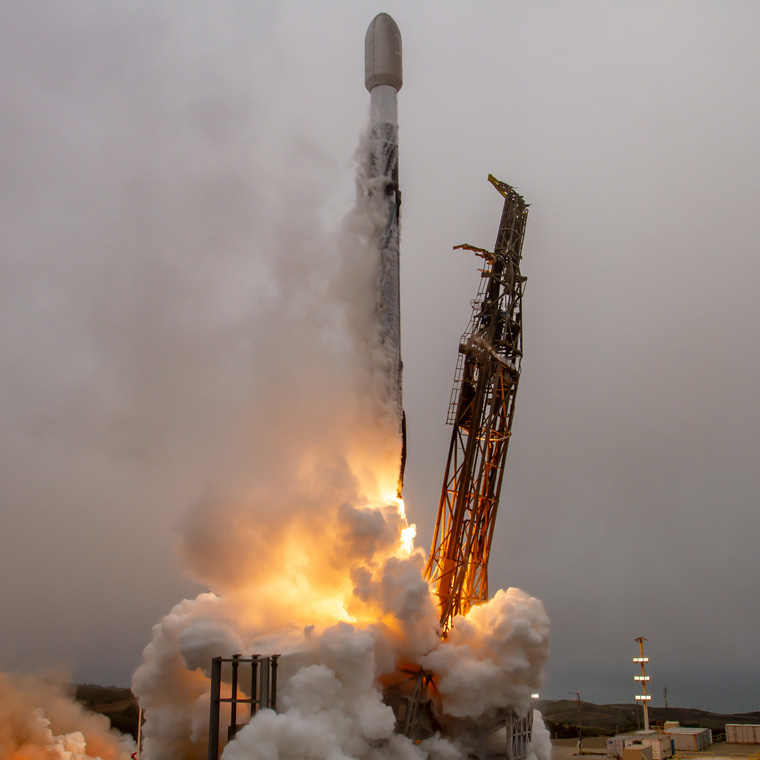SOYUZ-2
28th September 2020
Launch site
Plesetsk
15 satellites
12 cubesats
3 microsats
Main payload
Gonetz-M
Customers
Kepler Communications, Spire Global, UAE Space Agency, the Technische Universität Berlin, the Würzburg Center for Telematics, NanoAvionics, unnamed European-based commercial customer

Credit: ROSCOSMOS
Mission overview
The mission dubbed “Wanderlust”, Desire to Travel, lifted off on September 28 at 11:20 UTC on a Soyuz-2 rocket with a Fregat upper stage. 15 commercial, governmental and scientific satellites for Exolaunch’s customers from Europe, Canada, the UAE and the U.S were successfully delivered into orbit.
Exolaunch provided comprehensive launch, deployment, mission management and integration services to Kepler Communications, Spire Global, the UAE Space Agency, Technische Universität Berlin, Würzburg Center for Telematics, NanoAvionics and one unnamed commercial customer. With this launch, Exolaunch has flown 110 smallsats on multiple launch vehicles.
The company confirmed successful separation of three microsatellites weighing within 100 kg and 12 nanosatellites into a sun-synchronous orbit of 575 km. These smallsats have various missions, including IoT, Earth observation, airplane and ship tracking, radio occultation measurements, greenhouse gas monitoring, scientific experiments and new technology demonstration.
Wanderlust is Exolaunch’s eleventh rideshare mission in total and seventh mission with Soyuz. Exolaunch successfully utilized its proprietary flight-proven separation systems – CarboNIX the next generation shock-free separation system for microsatellites, upgraded modifications of EXOpod cubesat deployers, as well as its EXObox sequencers to flawlessly deploy its customers’ satellites into the target orbit.
Exolaunch’s full manifest on the Wanderlust mission includes the following payloads:
-
2 x 6U XL Antilles and Amidala GEN1 nanosatellites from Kepler Communications
Kepler, a developer of next-generation satellite communications technologies. These satellites, both of which carry a high-capacity Ku-band communications system and a prototype IoT payload, are important instalments of Kepler’s development and demonstration platforms. The satellites will deliver additional capacity for Kepler’s Global Data Service and also be a technology demonstration platform for Kepler’s narrowband connectivity solution for IoT devices.
-
4 x Lemur-class 3U nanosatellites from Spire Global
Spire Global runs the world’s largest private constellation of nanosatellites making radio occultation measurements, alongside other whole-earth observations that serve the maritime, weather, and aviation industries. To date, Spire has launched more than 100 satellites that operate across a broad range of orbits. Exolaunch has helped deploy approximately one-third of Spire’s satellite constellation, which now also includes four of its Lemur-class 3U satellites on today’s mission.
-
MeznSat 3U nanosatellite from the UAE Space Agency
The UAE Space Agency is pushing technological developments in the local New Space industry through MeznSat. The purpose of the satellite is to study and monitor greenhouse gases, specifically CO2 and Methane, over the UAE. MeznSat is a nanosatellite for climate observation, manufactured by Khalifa University of Science and Technology (KUST) in partnership with the American University of Ras Al-Khaimah (AURAK) and funded by the UAE Space Agency. The satellite’s primary payload will be a shortwave infrared (SWIR) spectrometer that makes observations in the 1000-1650 nm wavelength range to derive atmospheric greenhouse gas concentrations. This is a prominent project for the UAE Space Agency, launching immediately after its recent HOPE mission to Mars.
-
SALSAT microsatellite from the Technische Universität Berlin
With SALSAT, the Technische Universität Berlin aims to analyze the global spectrum use of S-band and VHF, UHF amateur radio bands. This analysis is required due to the increasing number of users and the intensification of radio communication, which is leading to an escalating probability of interference between radio signals. It will analyze the global spectrum usage with SALSA, a spectrum analyzer payload based on a Software Defined Radio and also features a variety of unique secondary payloads.
-
4 x 3U NetSat nanosatellites from the Würzburg Center for Telematics
NetSat is composed of four 3U satellites that will pioneer research in formation control. It is set to demonstrate the self-organization of several satellites in three-dimensional space to jointly optimize the configuration for given tasks. This will then open innovative perspectives for future sensor networks in space, including systems for three-dimensional imaging of the Earth’s surface and computer tomography methods for looking inside clouds.
-
Lacuna Space nanosatellite built by NanoAvionics
The payload, developed and built by Lacuna Space, consists of an IoT Space Gateway, able to receive and share data from small, battery powered sensors even in remote areas on the ground or at sea with little or no connectivity. The payload was integrated into NanoAvionics’ M3P nanosatellite bus. The mission has been part-funded and supported by the UK Space Agency and ESA.
-
2 microsatellites within 100 kg for Earth Observation for Exolaunch’s unnamed European-based commercial customer.
featured customers
Ready to go
to space?
Let's chat. Get in touch and we'll be with you shortly.














